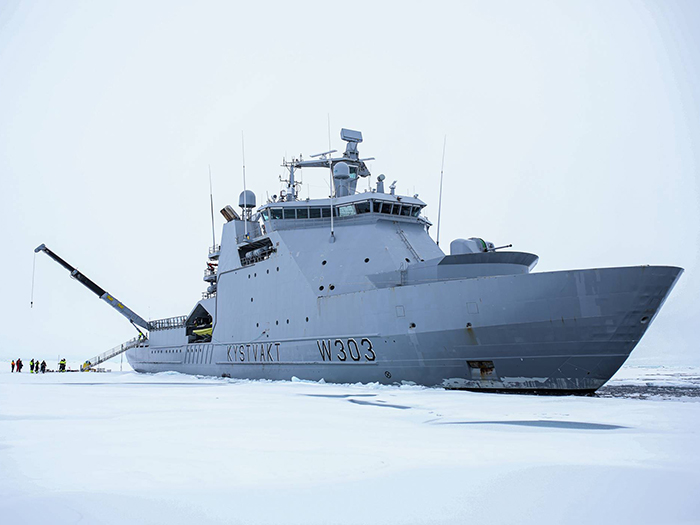
Norwegian Coast Guard vessel first Azipod equipped ship to reach North Pole
Written by Nick Blenkey
KV Svalbard at North Pole (Norwegian Coast Guard photograph
The Norwegian Coast Guard vessel KV Svalbard recently became the first ever Azipod powered ship to reach the North Pole when on an international environmental research expedition in late August.
In another historical debut, KV Svalbard became the first Norwegian vessel to sail to the “top of the world.”
KV Svalbard, built in 2001, and equipped with twin 5 MW Azipod icebreaking units, was sailing in the Arctic waters as part of the international scientific expedition, Coordinated Arctic Acoustic Thermometry Experiment (CAATEX), led by a Norwegian non-profit research foundation, the Nansen Center.
The aim of the expedition was to place seabed sensors that would allow the scientists to monitor water temperatures in the Arctic waters. Reaching the North Pole adds another dimension to the research, enabling data collection from some of the most remote parts of the Arctic Ocean.
“We were able to navigate through the Arctic waters and reach the North Pole faster than we thought possible,” said Ottar Haugen, Commander of the Norwegian Coast Guard. “This is a significant milestone for us and a proof that we have a vessel in our fleet equipped with a robust propulsion system that enables operations in the harshest ice conditions – all the way to the North Pole.”
The Azipod propulsion system, where the electric drive motor is in a submerged pod outside the ship hull, can rotate 360 degrees to increase maneuverability, which is particularly crucial for vessels operating in ice. Azipod icebreaking propulsion is capable of breaking up to 2.1 m thick Arctic ice and has a proven ability to cut fuel consumption by up to 20 percent compared to traditional shaftline propulsion systems.
ABB has delivered electric propulsion systems to over 90 icebreakers or ice-going vessels with a propulsion power of up to 45 MW. Options for Azipod propulsion span 1MW to 22 MW, and the technology has played a key role in developing ABB’s strong position for environmentally-friendly electric propulsion.




